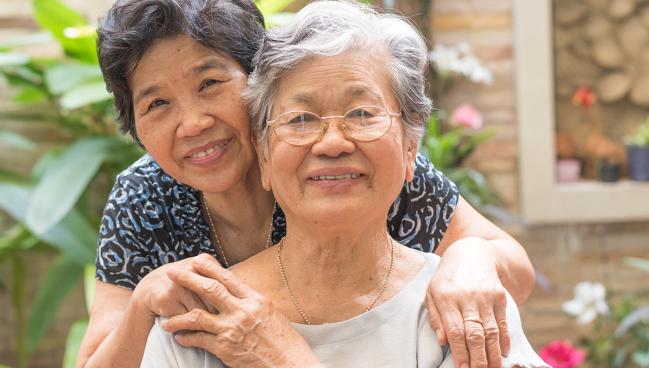Think Differently: Diabetes, CVD Risks in Asian Americans Not Uniform, AHA Says
Clinicians and researchers should take note of differences in diet, culture, and other factors that can impact a person’s risk.

Asian Americans, the fastest-growing ethnic group in the United States, aren’t, in fact, a uniform population when it comes to type 2 diabetes and atherosclerotic cardiovascular disease (ASCVD), a new American Heart Association (AHA) scientific statement highlights.
As of the 2020 census, 7.2% of the US population was Asian, mostly Chinese or Asian Indian followed by Filipino, Vietnamese, Korean, and Japanese Americans. Other subgroups hailed from Pakistan, Cambodia, Nepal, Indonesia, and Burma.
Tak W. Kwan, MD (Lenox Hill Hospital, New York, NY), chair of the statement’s writing group, said their work is meant to spread the word that the many subgroups aren’t the same. “I don’t think many of us—cardiologists or [other clinicians] or even patients—understand they have different kinds of risk,” he said.
While it’s well known that Asian Americans on the whole have a higher likelihood of developing type 2 diabetes and ASCVD compared with non-Hispanic white individuals, Kwan stressed that more-detailed data are lacking. One important gap occurs at the outset of much research, he told TCTMD, in that “we always group the Asian Americans as a single group. . . . A lot of reports never separate that.”
But it’s clear that Asian Americans aren’t homogeneous, he continued. “If you look at different countries [and] areas, they have different genetics, socioeconomic factors, cultural backgrounds, and lifestyles,” which together translate into variations in risk.
For instance, compared with non-Hispanic whites, diabetes prevalence is most sharply elevated in South Asians, Filipinos, and Native Hawaiian/Pacific Islanders and is heightened to a lesser degree in East Asians. Additionally, “stroke risk is very high in Filipinos and Japanese” individuals, while South Asians stand out as having particularly high ASCVD risk, Kwan noted.
This, he said, is why “we were very interested in putting everything together to summarize all this evidence to see what we can learn from these populations.”
The document, published online Monday in Circulation, examines this diversity—and how it intersects with risk—in detail.
If you look at different countries [and] areas, they have different genetics, socioeconomic factors, cultural backgrounds, and lifestyles. Tak W. Kwan
Diet, as it is for all populations, has a major influence on ASCVD and diabetes risk in Asian Americans, as the paper makes clear.
To better understand eating patterns in this context, the writing group considered three regions: Southeast Asia (Cambodia, Vietnam, Thailand, Indonesia, Laos, Malaysia, and Singapore), South Asia (India, Pakistan, Sri Lanka, Nepal, Bangladesh, and Burma), and Northeast Asia (China, Taiwan, Japan, and Korea). For each, they highlighted features such as flavor and methods of preparation, weaknesses (eg, low dietary fiber), and suggestions for areas of improvement (eg, low-sodium alternatives to fish sauce).
The report also considers other lifestyle interventions, such as tailored approaches to encouraging physical activity and reducing tobacco use, as well as pharmaceutical interventions and the role of complementary/alternative medicines to address type 2 diabetes.
Another key component the paper addresses are opportunities to refine research. To start, said Kwan, registries and clinical trials can incorporate questions about participants’ backgrounds, not simply list them as Asian American, and take steps to ensure an adequate number of participants across the subgroups are enrolled. Hospital discharge, he added, also is a good time to gather information from patients.
Other possibilities include the development of “culturally tailored measurement tools” for things like diet and body fat, identification of novel risk factors that capture differences among the Asian American subgroups, and better understanding of mechanistic pathways and disparities in access to care, the statement notes.
For now, though, awareness is the strongest message of the AHA scientific statement, said Kwan. Cardiologists, based on the data presented within the document, will know to pay added attention to symptoms like chest pain in certain groups, he pointed out. And “if they see a patient in their office, they will immediately know that the risk is higher for South Asians when they have a heart attack, for example.”
Caitlin E. Cox is News Editor of TCTMD and Associate Director, Editorial Content at the Cardiovascular Research Foundation. She produces the…
Read Full BioSources
Kwan TW, Wong SS, Hong Y, et al. Epidemiology of diabetes and atherosclerotic cardiovascular disease among Asian American adults: implications, management, and future directions: a scientific statement from the American Heart Association. Circulation. 2023;Epub ahead of print.
Disclosures
- Kwan reports no relevant conflicts of interest.





Comments